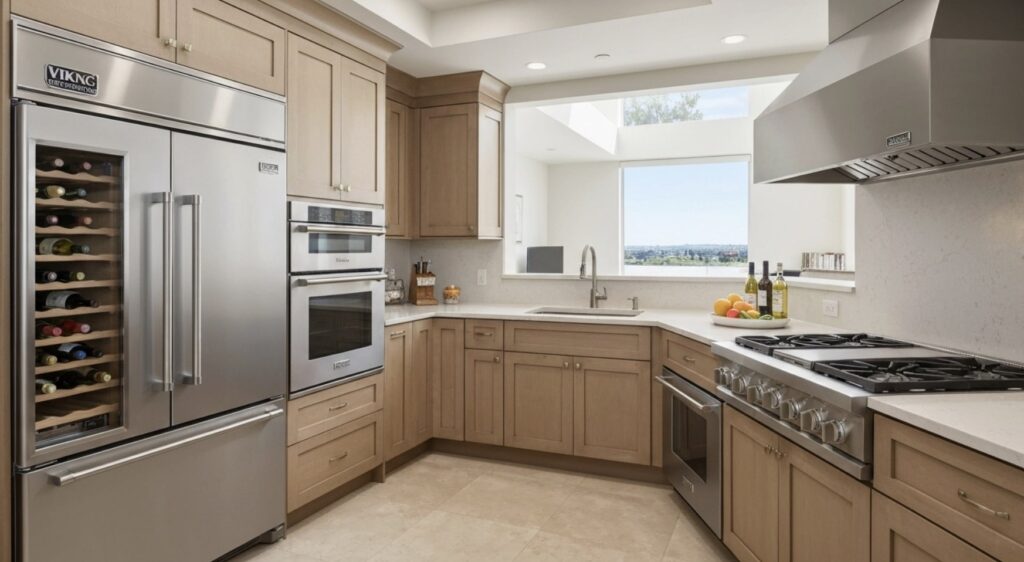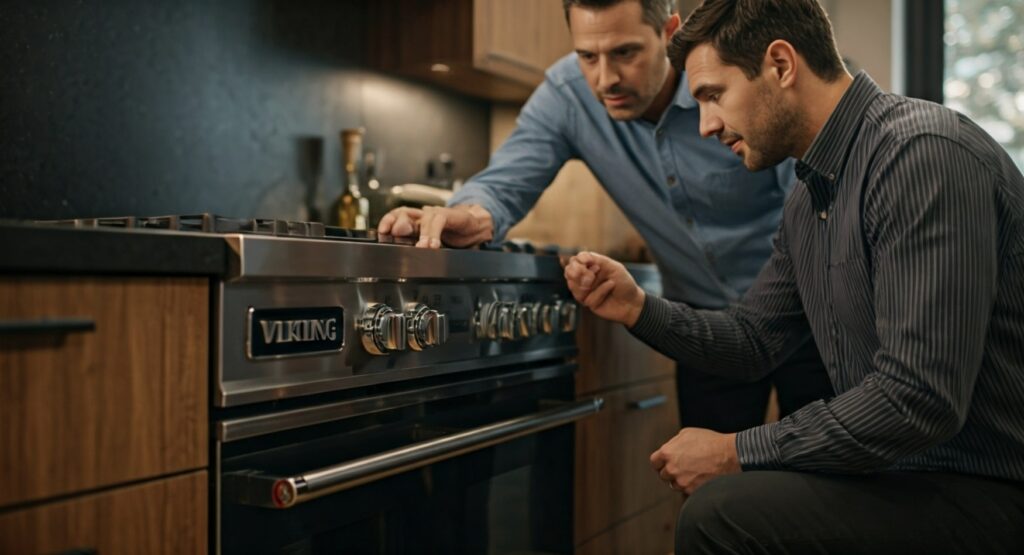A Viking freezer is a high-quality appliance designed to keep your frozen goods at the perfect temperature. However, like any appliance, it can sometimes experience temperature-related issues. Addressing these Viking freezer temperature problems promptly can save your food, money, and the hassle of a larger repair down the line. In this article, we’ll cover common causes, troubleshooting steps, and ways to prevent temperature issues in your Viking freezer.
1. Temperature Settings Incorrectly Set
Sometimes, Viking freezer issues are simply due to an incorrect temperature setting. If you’re experiencing temperature fluctuations, check that the freezer is set to the manufacturer’s recommended temperature, typically between 0°F and -10°F.
- Solution: Open the freezer, locate the temperature control panel, and adjust it if necessary. Wait 24 hours to see if the freezer temperature stabilizes.
2. Dirty or Clogged Condenser Coils
Condenser coils release the heat from the freezer, and when they’re covered in dust or dirt, they struggle to do their job. This can lead to Viking freezer temperature problems because the appliance will overheat, causing internal temperature changes.
- Solution: Unplug the freezer, locate the condenser coils (usually at the back or underneath), and clean them with a vacuum and brush. Ideally, clean them every 6 months to keep your freezer running efficiently.
3. Freezer Door Not Sealing Properly
A faulty or loose door gasket can prevent the door from sealing correctly, allowing cold air to escape and causing temperature issues in your Viking freezer. Over time, the gasket may develop cracks or wear out, creating small gaps.
- Solution: Inspect the gasket by running your hand around the door’s edge. If you feel cold air escaping, it’s time to replace the gasket. You can order a replacement from Viking and replace it yourself or consult a technician for help.
4. Blocked Air Vents
Freezers rely on proper airflow to maintain consistent temperatures. If food items are blocking the air vents, your freezer may struggle to stay cold. This is a common cause of temperature fluctuation problems in Viking freezers.
- Solution: Rearrange items in the freezer, ensuring that no items are blocking the vents. Aim to keep larger items on the sides and smaller items in the center for optimal airflow.
5. Malfunctioning Evaporator Fan
The evaporator fan circulates cold air throughout the freezer, helping it maintain a stable temperature. If this fan fails, cold air won’t distribute evenly, leading to Viking freezer temperature problems.
- Solution: Listen for a humming sound from the evaporator fan when the freezer is running. If it’s silent, you may need to replace the fan or consult a repair professional for assistance.
6. Faulty Thermostat
The thermostat is responsible for monitoring and regulating the temperature inside your freezer. A faulty thermostat can result in temperature fluctuations in Viking freezers, leading to items thawing or freezing inconsistently.
- Solution: Use a thermometer to check the internal temperature against the thermostat setting. If the readings don’t match, your thermostat may be faulty and will likely need a replacement.
7. Compressor Issues
The compressor is a key component in cooling systems, pumping refrigerant through the coils to produce cold air. If the compressor starts to fail, you may encounter severe temperature problems in your Viking freezer.
- Solution: Listen for unusual sounds or vibrations coming from the compressor. If it’s running continuously or making loud noises, it could be malfunctioning. In such cases, it’s best to call a professional, as compressor repairs require expert handling.
8. Low Refrigerant Levels
Refrigerant is essential to the cooling process. A leak or low refrigerant levels can lead to temperature issues in Viking freezers, causing it to fail in maintaining the proper freezing temperatures.
- Solution: Contact a professional appliance repair service to inspect refrigerant levels. If there’s a leak, they can safely handle the repair and refill the refrigerant as needed.
9. Defrost Cycle Problems
Many Viking freezers have an automatic defrost feature. If this cycle doesn’t run properly, ice may build up around the evaporator coils, leading to inconsistent temperatures in the freezer.
- Solution: If you suspect a defrost issue, you may notice ice accumulating in the freezer. Manually defrost the freezer by unplugging it and allowing it to thaw. If the issue recurs, it may be time to consult a repair professional.
10. Temperature Sensor Malfunction
A malfunctioning temperature sensor can cause Viking freezer temperature problems by providing incorrect readings to the thermostat or control board.
- Solution: Run a temperature check using a thermometer to verify sensor accuracy. If there’s a significant discrepancy, a faulty sensor may need replacement.
Final Thoughts
Addressing Viking freezer temperature problems doesn’t have to be daunting. By understanding the potential causes and applying these straightforward fixes, you can save time and avoid costly repairs. Remember, regular maintenance and quick troubleshooting can keep your freezer running efficiently for years to come.
If your Viking freezer temperature issues persist despite these steps, our team at Viking Appliance Repair Pros is here to help. Don’t hesitate to call us for expert assistance.
FAQs
1. Why is my Viking freezer not staying cold?
A faulty thermostat, dirty condenser coils, or blocked air vents may be causing the issue. For professional solutions, check out our Viking Freezer Repair in Agoura Hills or West Hollywood Viking Freezer Repair services.
2. How often should I clean the condenser coils?
Clean them every 6 months to ensure peak performance. Learn more maintenance tips in our blog: Troubleshooting a Freezer with Frost on the Walls.
3. Can I replace the freezer door gasket myself?
Yes, with the correct part and proper instructions. For reliable gasket replacements, visit Calabasas Viking Freezer Repair or Rancho Palos Verdes Viking Freezer Repair.
4. Why is my freezer making strange noises?
This might indicate compressor or fan issues. If so, our experts at Fort Washington Viking Refrigerator Repair or Lakewood Viking Refrigerator Repair can help.
5. Where can I find other Viking appliance services?
We provide comprehensive repair solutions across multiple locations and appliances:
- Alhambra Viking Wine Cooler Repair
- Miami Viking Refrigerator Repair
- Cerritos Viking Dishwasher Repair
- Palos Verdes Estates Viking Stove Repair
- West Covina Viking Cooktop Repair
- Phoenix Viking Wine Cooler Repair
For more helpful resources, explore our expert blogs:
- Holiday Viking Cooktop Tips
- Ultimate Refrigerator Repair Guide
- Fixing Wine Cooler Compressor Pressure Switches
- Malibu’s Mastery in Viking Repairs
Need expert help now?
Locate a service near you:






